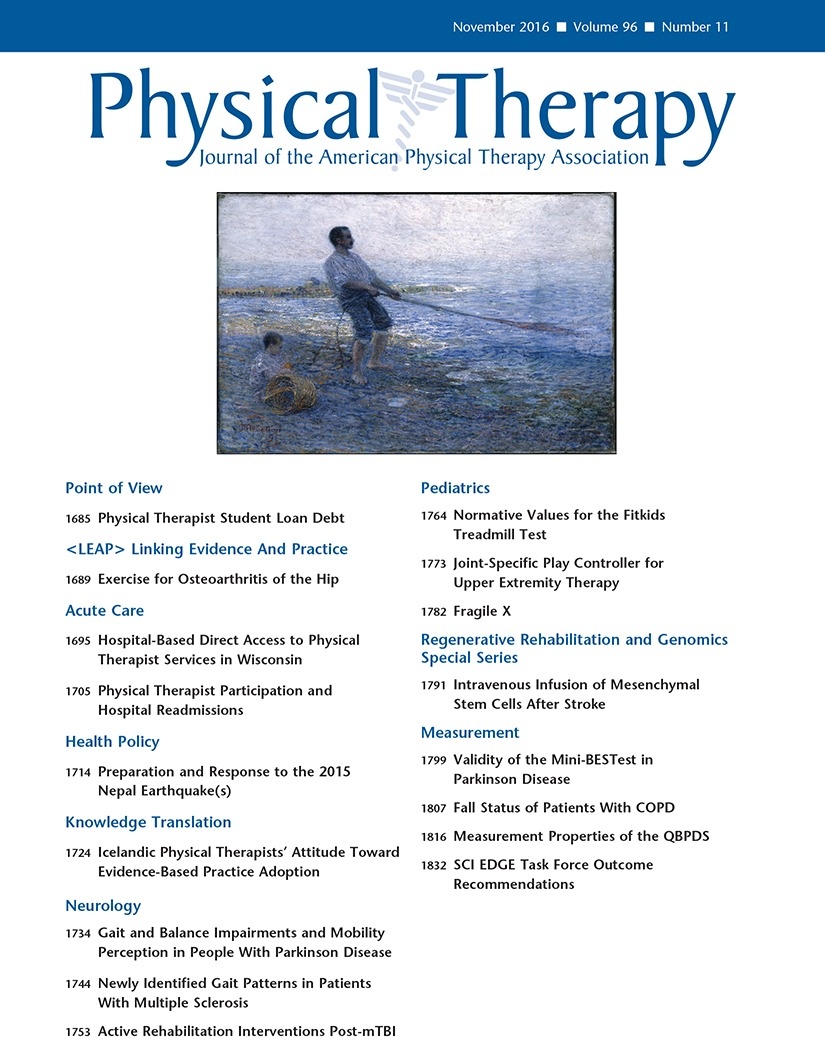
Improved pressure pain threshold in patients with knee osteoarthritis with TENS treatment

Improved pressure pain threshold in patients with knee osteoarthritis with TENS treatment
Effects of transcutaneous electrical nerve stimulation on pain, pain sensitivity, and function in people with knee osteoarthritis: a randomized controlled trial
Phys Ther. 2012 Jul;92(7):898-910. Epub 2012 Mar 30Did you know you're eligible to earn 0.5 CME credits for reading this report? Click Here
Synopsis
75 patients with knee osteoarthritis were randomized to receive a high frequency transcutaneous electrical nerve stimulation (TENS) treatment, a low frequency TENS treatment, or a placebo TENS treatment. The primary outcomes were pain, pain sensitivity and function. Results indicated that the HF- and LF-TENS groups showed improvements in pressure pain threshold. However, the TENS treatments did no...
To view the full content, login to your account,
or start your 30-day FREE Trial today.
FREE TRIAL
LOGIN
Forgot Password?
Explore some of our unlocked ACE Reports below!

Learn about our AI Driven
High Impact Search Feature
Our AI driven High Impact metric calculates the impact an article will have by considering both the publishing journal and the content of the article itself. Built using the latest advances in natural language processing, OE High Impact predicts an article’s future number of citations better than impact factor alone.
Continue



 LOGIN
LOGIN

Join the Conversation
Please Login or Join to leave comments.